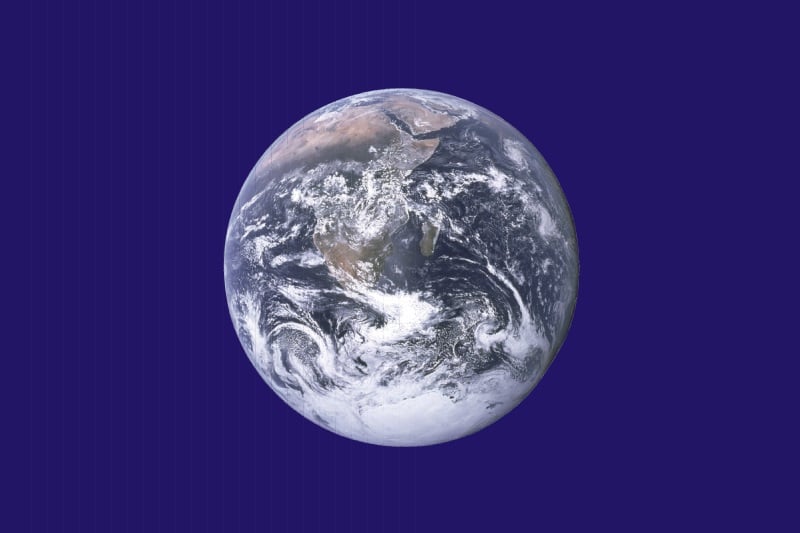
Carl Sagan, the American astronomer, author, and science communicator was renowned for making difficult scientific concepts understandable to the millions; he did exactly this at the beginning of his renowned series Cosmos by explaining the thought process of the ancient Greek scientist Eratosthenes.
In a world of anti-science, anti-expert, anti-vax fervor, take heart from the great communicator’s elegant explanation of how the ancient Greeks discovered and proved seminal ideas in the realm of human thought.
Perhaps best known for his phrase “billions and billions,” used to describe the stars in his series Cosmos, the beloved scientist initially delved into the work of the ancient Greek mathematician Eratosthenes, who was the first to mathematically prove that the Earth was indeed round.
Carl Sagan explained grand scientific concepts to non-scientists
Eratosthenes proved over two thousand years ago not only that the earth was round but also mathematically determined its exact circumference.
Incredibly, the ancient Greek mathematician didn’t have much more than a stick, his brain, and what Sagan called “a zest for experiment” to help him make the amazing discovery.
Born in Cyrene, an ancient Greek colony in modern-day Libya, in 276 BC, Eratosthenes was a polymath, meaning he had vast knowledge of many different subjects, including mathematics, astronomy, music theory, and poetry.

How Eratosthenes discovered the circumference of the Earth
He was intrigued to hear from observers that in Syene, a town south of Alexandria in Egypt, no vertical shadows were cast at noon on the summer solstice, when the sun was directly overhead.
Hence, the Greek mathematician naturally wondered if this was the case in Alexandria, too, a few hundreds of miles to the North of Syene. If it was not, then that would mean that the Earth indeed has a curved surface.
In his series, Sagan started out in his history of the understanding of the cosmos by relating the incredible story of this discovery. According to Sagan, Eratosthenes asked how it could be “that at the same instant there was no shadow at Syene and a very substantial shadow [in] Alexandria?”
“The only answer is that the surface of the Earth is curved,” Sagan stated, demonstrating the concept by the use of a cardboard map, which he then flexed, showing a distinct shadow cast by a pylon he had fixed in the city of Alexandria.
“Not only that, but the greater the curvature, the bigger the difference in the length of the shadows,” the astronomer explained.
“The sun is so far away that its rays are parallel when they reach the Earth,” Sagan pointed out. “Sticks at different angles to the sun’s rays will cast shadows at different lengths. The observed difference in the shadow lengths—the distance between Alexandria and Syene— had to be about seven degrees along the surface of the earth.”
Eratosthenes decided to conduct an experiment to test this theory, and on June 21st in the year 240 BC, he traveled to Alexandria, placed a stick straight into the ground, and waited to see if a shadow would be cast at noon.
It turns out there indeed was one, and he measured it. The shadow that was cast measured out to be about seven degrees; in other words, if sticks placed at each end of the shadow continued down into the center of the Earth, they would meet at an angle of seven degrees.
After conducting this experiment, Eratosthenes came to a very logical conclusion. If the sun’s rays are coming in at the same angle at the same time of day, and a stick in Alexandria casts a shadow of seven degrees while the stick in Syene does not cast a shadow at all, it must mean that the Earth’s surface is indeed curved.
The idea of a spherical Earth had already been known to Pythagoras around 500 BC and was validated by Aristotle a few centuries later.
Eratosthenes took this concept a bit further, however, thinking that if the Ancient Greeks before him had been correct and the Earth was a sphere, he could therefore use his observations to calculate the circumference of our planet.
After hiring a man to pace the distance between Syene and Alexandria, he found out that the two cities were five thousand stadia apart, which is about eight hundred kilometers (497.09 miles).
He could then use simple proportions to find the Earth’s circumference—7.2 degrees is 1/50 of 360 degrees, so eight hundred times fifty equals forty thousand kilometers (24,854.84 miles).
And just like that, an ancient Greek calculated precisely the circumference of our entire planet with the most basic tools and his formidable logic over two thousand years ago.
Sagan stated that “Eratosthenes’ only tools were sticks, eyes, feet and brains—plus a zest for experiment. With those tools, he correctly deduced the circumference of the Earth—to high precision—with an error of only a few percent. That’s pretty good figuring for 2,200 years ago.”
See all the latest news from Greece and the world at Greekreporter.com. Contact our newsroom to report an update or send your story, photos and videos. Follow GR on Google News and subscribe here to our daily email!



